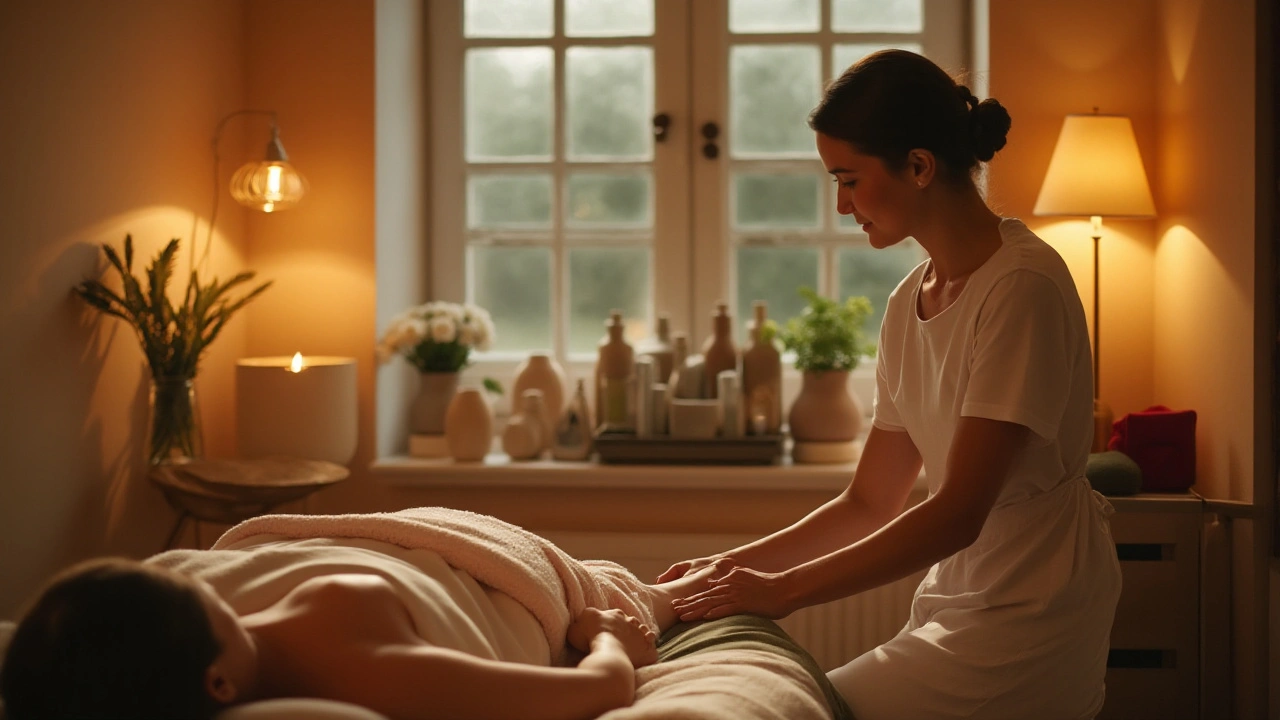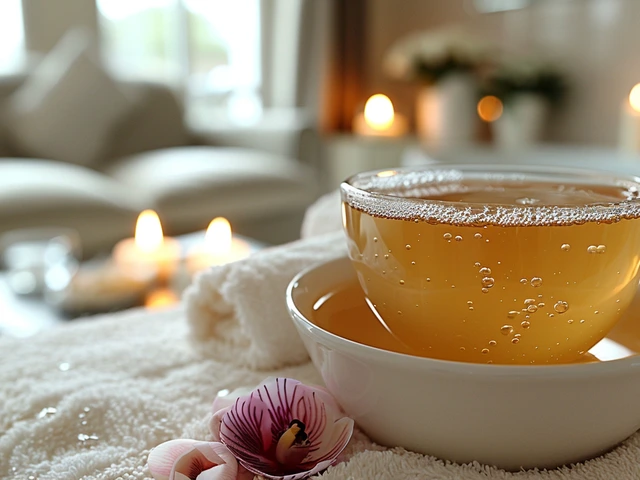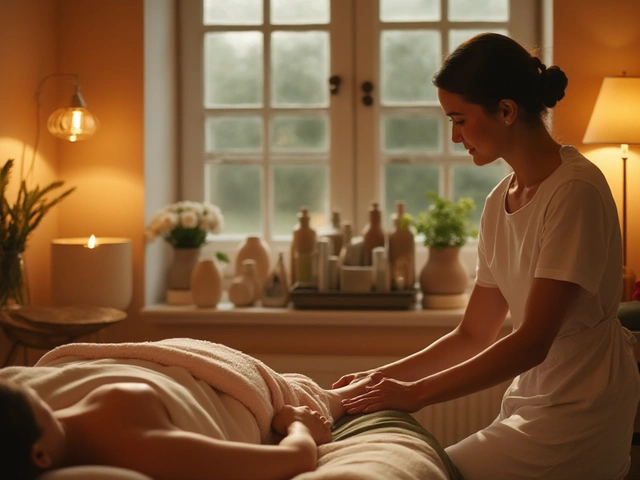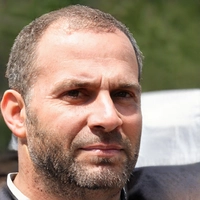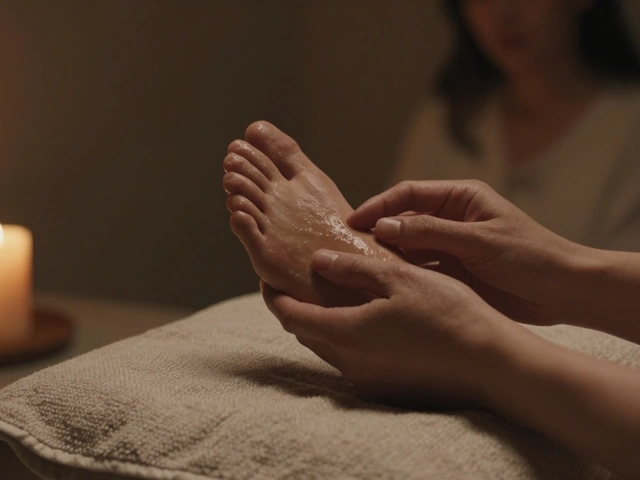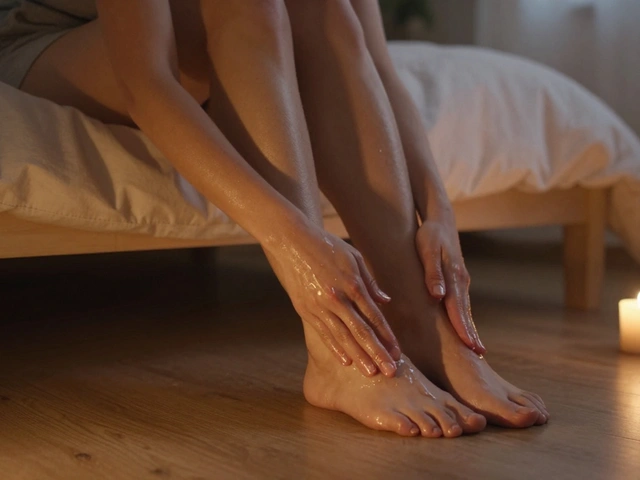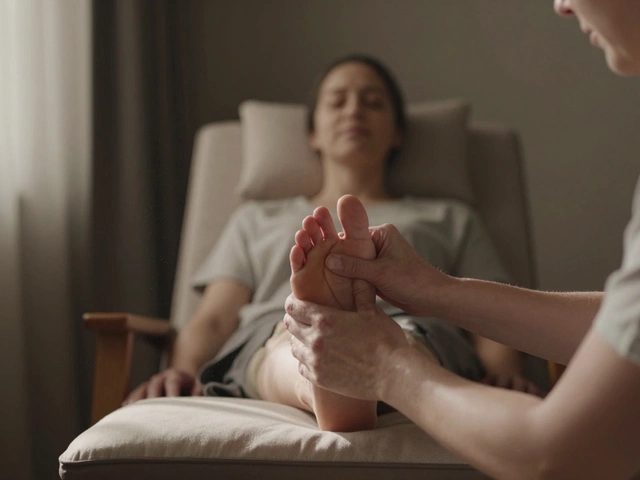In a world that's increasingly looking towards alternative therapies, reflexology shines brightly with its promise of holistic healing. A practice with roots reaching back thousands of years, reflexology holds fascination and potential in equal measure. The approach revolves around the idea that targeted pressure on specific points of the body can influence the health of organs and systems.
While many people stumble upon reflexology as a novel concept, enthusiasts will tell you it's much more than a wellness trend. Understanding its roots and methods reveals how this ancient art finds relevance today. The notion of harnessing nature and the human body for health brings an enduring allure, positioning reflexology as a beacon for health seekers worldwide.
- The Origins and Principles of Reflexology
- How Reflexology Works
- Benefits of Reflexology
- Exploring Reflexology Techniques
- Tips for Finding a Reflexology Practitioner
The Origins and Principles of Reflexology
The practice of reflexology is rooted deep within the pages of antiquity, capturing the essence of traditional knowledge in various cultures. Historical evidence suggests that reflexology has been used as a healing technique in ancient Egypt, China, and among Native American tribes. A pictorial representation from the tomb of Ankhamor, dated to 2330 BC, features what appears to be an individual receiving foot massage, hinting at the early inception of reflexology among the Egyptians.
Traditional Chinese medicine, dating back several millennia, proposed that life energy, known as 'Qi,' flows through specific pathways in the body. Reflexology shares this fundamental understanding, suggesting that pressure points on the feet, hands, and ears correspond with various organs and systems. This ideology aligns with the principles of acupuncture and acupressure, although distinct in practice. As reflexology spread across the globe, it has evolved while retaining its core belief - promoting physical healing by harnessing the body's natural energy.
In the early 20th century, an American doctor named William H. Fitzgerald introduced the concept of 'Zone Therapy,' dividing the body into ten vertical zones that run from head to toe. Fitzgerald proposed that applying pressure on certain points within these zones could alleviate pain in corresponding parts of the body. His work laid the groundwork for Eunice Ingham, a physiotherapist credited with developing reflexology as we know it today. Ingham mapped the entire body onto the feet and refined the techniques, bringing wider recognition to reflexology's potential health benefits.
One of the most compelling aspects of reflexology is its simplicity and accessibility. Unlike many other alternative therapies, reflexology does not require elaborate settings or equipment, making it easy for practitioners to offer their services and for individuals to learn self-care techniques. Many proponents believe that reflexology can be a powerful complementary therapy, promoting relaxation, enhancing circulation, and aiding in pain management. The principles behind reflexology emphasize a holistic approach, considering the interconnectedness of the body's systems.
Despite its appeal, scientific evidence supporting reflexology's efficacy is varied, fueling the curiosity of researchers and practitioners alike. While some studies suggest potential benefits such as reduced stress and improved wellbeing, the precise mechanisms remain subjects of speculation and investigation. Reflexology consistently attracts attention for these insights, as it beckons with the promise of gentle, non-invasive care. According to an article in the Complementary Medicine Research journal, “Reflexology may offer important benefits for the broad spectrum of health conditions when delivered as a simple adjunctive therapy.” Yet, reflexology enthusiasts argue its real power lies within experiential evidence and centuries of practice.
How Reflexology Works
To understand how reflexology functions, one must delve into the intriguing science of zones and reflex areas. At its core, the practice is predicated on the idea that our body is interconnected through a system of reflex points predominantly located on the feet and hands. These zones map out to different parts of the body. When pressure is applied to a particular reflex point, it is believed to influence the vertebrate organs, glands, or systems. This is known as the zone theory, which suggests that there are ten vertical zones running from the fingers and toes all the way through the body. Each of these zones corresponds to certain body parts, making reflexology a comprehensive map to balance one's health.
Imagine a long day filled with stress and mental fatigue. Reflexology taps into the body's innate ability to de-stress, where targeted pressure can tell the neural pathways to relax. This is achieved through nerve stimulation. The gentle pressure applied by a trained reflexologist can stimulate over 7,000 nerve endings in the feet alone. Such stimulation may enhance blood circulation, thought to support the body’s function, aiding in the removal of toxins and in delivering nutrients to vital areas. The increased blood flow contributes to overall wellbeing by promoting relaxation and potentially alleviating stress—key elements in maintaining a good balance within body systems.
Modern Scientific Insights
Today, scientific studies continue to explore the effectiveness of reflexology, and while it holds a plethora of anecdotal evidence, modern science offers insights too. Researchers have noted that reflexology might help in reducing pain and psychological symptoms, such as anxiety and depression, while also augmenting relaxation and sleep. A report published in the National Institutes of Health delves into various trials that suggest potential benefits. Though the mechanisms are still largely being decoded, the existing evidence showcases the potential of reflexology in adjunctive care. Interestingly, several hospitals and therapy centers incorporate it as part of complementary treatments due to its soothing effects.
"Reflexology did not replace medical treatment, but it complemented the care procedures, aiming to increase patient comfort and reduce stress," says a study published by the Journal of Holistic Nursing.
Reflexology's appeal lies not purely in its practical application, but more so in its philosophical approach to body-mind synergy. Each practitioner might employ different techniques based on their training and your personal health goals. Some may integrate massage-like motions, while others focus on pinpoint precision with their thumb or fingers. Tailoring the approach to individual needs means that anyone, from children to the elderly, can potentially benefit from reflexology. As the world becomes more complex, intertwined therapies like reflexology often offer a gentle reminder that sometimes answers lie in understanding the fundamental connections within our own bodies.
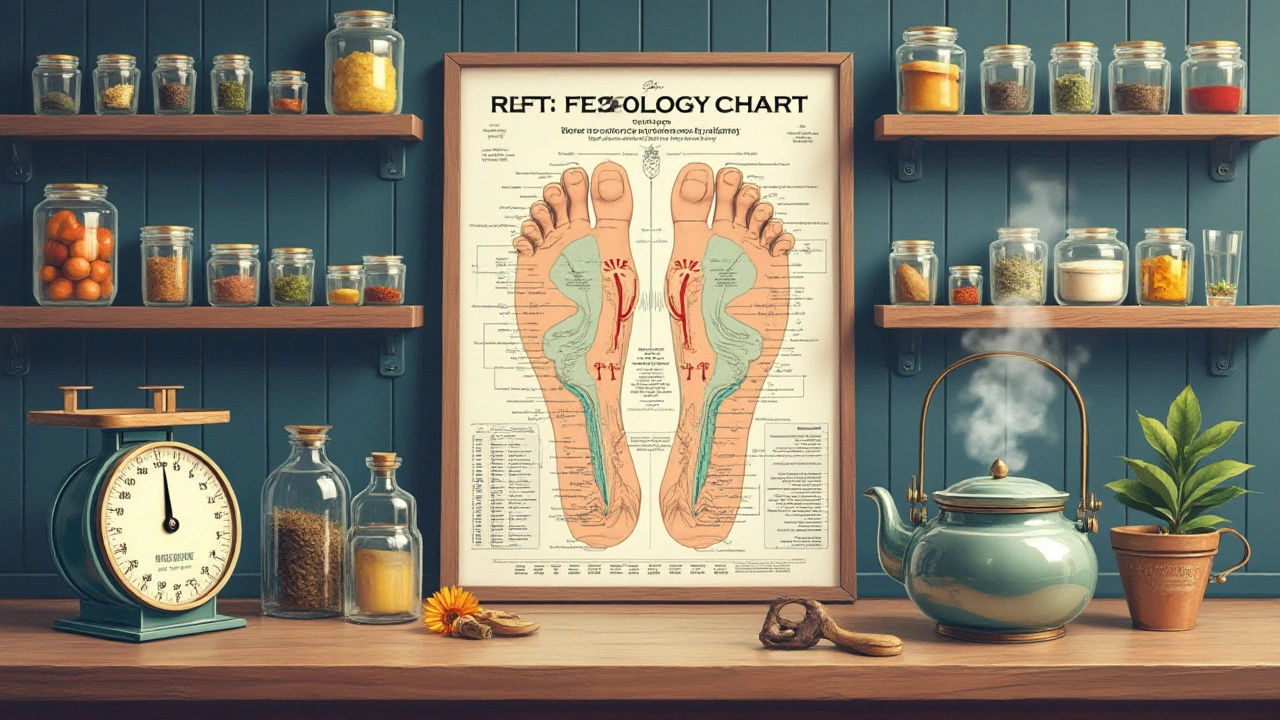
Benefits of Reflexology
When it comes to approaches that offer a different perspective on health and wellness, reflexology stands out for its unique blend of ancient wisdom and practical benefits. This therapeutic technique works wonders on several fronts, promising relief from stress, improved circulation, and an overall boost to well-being. Stress, the ubiquitous villain of modern life, finds a worthy adversary in reflexology. By applying gentle pressure to specific points, practitioners believe they can unblock stress pathways and encourage relaxation. This helps the body's innate healing processes to kick in, reducing anxiety levels and promoting mental clarity. For those battling chronic stress, reflexology can offer a non-invasive way to unwind and achieve a sense of calm.
Another major benefit of reflexology is its ability to stimulate blood flow throughout the body. Good circulation is crucial for nutrient delivery and waste removal, and poor circulation can lead to various health issues, including fatigue and swollen limbs. Reflexologists claim that their techniques can enhance circulation by influencing these reflex points. The rhythmic, deliberate motions employed during a session can encourage the cardiovascular system to function more efficiently, which in turn ensures that oxygen and nutrients reach cells as they should. Improved circulation also supports quick recovery from injuries by promoting healthy cell regeneration.
Pain management is yet another area where reflexology shines, often used as an adjunct therapy for chronic conditions. Whether it's headaches, migraines, or conditions like arthritis, many have experienced substantial relief through reflexology. The technique may interrupt pain pathways, thereby reducing discomfort by stimulating the production of endorphins, the body's natural painkillers. If traditional pain management strategies haven’t been effective, reflexology might provide the additional support one needs. A report by the Association of Reflexologists noted that individuals often find reflexology beneficial when conventional treatments reach their limits.
"Reflexology offers a fascinating complement to mainstream medicine, often providing people with relief in ways they didn’t expect," says Dr. Mary Campbell, a holistic health expert.
As part of a holistic health approach, reflexology also aims to foster emotional well-being. Emotional stress can manifest as physical symptoms, and addressing these at the reflex level might offer some people a sense of emotional balance. Various studies suggest that reflexology can lead to a decrease in tension, improvement in mood, and even help in dealing with symptoms of depression. The mindful attention during reflexology sessions encourages individuals to focus on their body and mind, allowing them to release emotional tension. It becomes a sanctuary where one can recalibrate not just physical energy but also emotional resilience.
Lastly, reflexology's role in strengthening the immune system should not be underestimated. Consistent sessions may contribute to a more robust immune response, according to proponents. The theory suggests that by enhancing circulation and reducing stress, lymphatic flow is improved, thereby supporting immunity. Detoxification through reflexology also clears out toxins, facilitating a healthier internal environment. Although more scientific research is needed to fully validate these claims, anecdotal evidence from practitioners and clients often highlights these immune-boosting aspects. Many who incorporate reflexology into their lifestyle report fewer illnesses and improved overall health, a testament to the practice's potential for holistic empowerment.
Exploring Reflexology Techniques
Reflexology techniques encompass a range of practices grounded in the belief that certain areas of the feet, hands, and ears are connected energetically to organs and bodily systems. Practitioners aim to release tension, improve circulation, and support the body's own healing processes. The primary focus is usually on the feet, as they contain the most reflex points, making them the perfect canvas for skilled practitioners to deliver targeted pressure. Each session typically begins with a gentle 'hello' to the feet or hands, a sort of manual greeting to prepare the area for delightfully deep relaxation.
One of the basic techniques in reflexology, sometimes regarded as the 'walking' method, involves applying thumb or finger pressure to reflex points by walking the fingers across the foot or hand. This approach mimics gentle steps, traveling across key zones that correspond to various parts of the body. Imagine tracing a path from a hilltop to the valley below—it's a journey across the body's interactive map etched on the soles of your feet. Such techniques are often combined with circular motions, used to soothe or stimulate as needed, culminating in a rhythmic dance of interaction between practitioner and patient.
According to Eunice Ingham, one of the pioneers of modern reflexology, and her "The Stories the Feet Can Tell Thru Reflexology," the feedback loop between pressure points and physical wellbeing is profound:
The feet are a mirror of the body, and skilled hands can reveal secrets that often remain hidden to the naked eye.This delicate art requires touch sensitivity honed through continuous practice and understanding. Reflexologists treat this connection almost as a form of communication, deciphering responses from the arches and insteps where clues about stress and imbalance sometimes reside. Combining empathy with expertise, reflexologists chart routes over the soft plains of the feet, making stops along pain points and areas of tension.
Using Tools in Reflexology
Though primarily a hands-on approach, some reflexologists incorporate tools such as wooden sticks, balls, or rollers to exert firmer pressure or target areas more effectively. The choice to use tools often depends on the therapist’s style and the client's needs, balancing comfort with therapeutic intent. Tools can be particularly useful in instances where more accuracy or sustained pressure is necessary, ensuring that each session addresses not just symptomatic pain but underlying disruptions in bodily harmony. However, any session's success hinges on understanding and sometimes quiet conversation with the client to pinpoint and prioritize treatment areas.Setting the Scene for Reflexology
An often understated part of reflexology's effectiveness lies in its setting and ambiance. Reflexologists aim to create a space that encourages trust and relaxation, with soothing scents, ambient lighting, and tranquil music. This holistic environment supports the physical techniques, providing a full sensory experience believed to enhance the therapy's impact. The session may close with gentle strokes to soothe any sensitive areas and a calm, respectful closing of the 'soft communication' made with each foot or hand.The benefits of exploring reflexology are numerous, touching not just physical wellbeing but emotional and mental balances. For those keen on this ancient art, whether through professional sessions or DIY techniques at home, the practice offers a gentle invitation to reconnect with one’s body in the treadmill of modern life. Intrigued? The journey with reflexology often begins with a simple curiosity, eager to dig deeper into one's own natural ability to heal and thrive.

Tips for Finding a Reflexology Practitioner
Embarking on a journey into reflexology requires more than just a curiosity about the ancient art of healing. Finding the right practitioner is crucial to truly unlock the benefits this therapy has to offer. Start by asking for recommendations among friends, family, or colleagues who have had personal experiences. First-hand testimonials often provide the most honest insights into the practitioner's style and effectiveness. Online reviews and community forums can also be useful, presenting a broader view of who might be the best fit for your needs.
When selecting a reflexologist, it's important to ensure they possess the right qualifications. In Australia, a practitioner should have a diploma in reflexology or a related health certification from a recognized institution. Investigating whether they're members of established national associations like the Reflexology Association of Australia can also serve as a quality indicator. Membership often requires adherence to specific standards, giving you peace of mind that they are committed to maintaining high professional and ethical conduct.
It's wise to schedule an initial consultation before committing to a series of sessions. This meeting gives you a chance to gauge your comfort level with the practitioner. Pay attention to how they communicate and whether they seem genuinely interested in your wellbeing. A competent reflexologist will perform a detailed assessment, asking questions about your health history and lifestyle. This depth of inquiry shows that they intend to tailor their approach to meet your unique needs. Be wary of practitioners who claim to cure specific ailments; while reflexology can support healing, it's not a replacement for medical treatment.
"A good practitioner listens to your specific concerns and works holistically to create a plan that's unique to you," says Dr. Edwin Lee, a renowned reflexology expert.
Reflexology clinics sometimes offer complementary therapies such as aromatherapy or massage. Consider if these additional services appeal to you as part of an integrated health regimen. A welcoming environment enhances relaxation, so observe the clinic's atmosphere during your visit. Cleanliness, soothing decor, and a calm setting contribute to a more enjoyable experience, helping you to reap the mental and emotional benefits of reflexology.
Ultimately, trust your instincts when choosing a reflexology practitioner. Like any partnership, a mutual sense of trust and respect can greatly enhance the effectiveness of your sessions. Prioritize communication and honesty; your input is as crucial as their expertise. With the right practitioner, you embark on a journey not only into reflexology but also towards a lifestyle of heightened wellbeing and balance.

